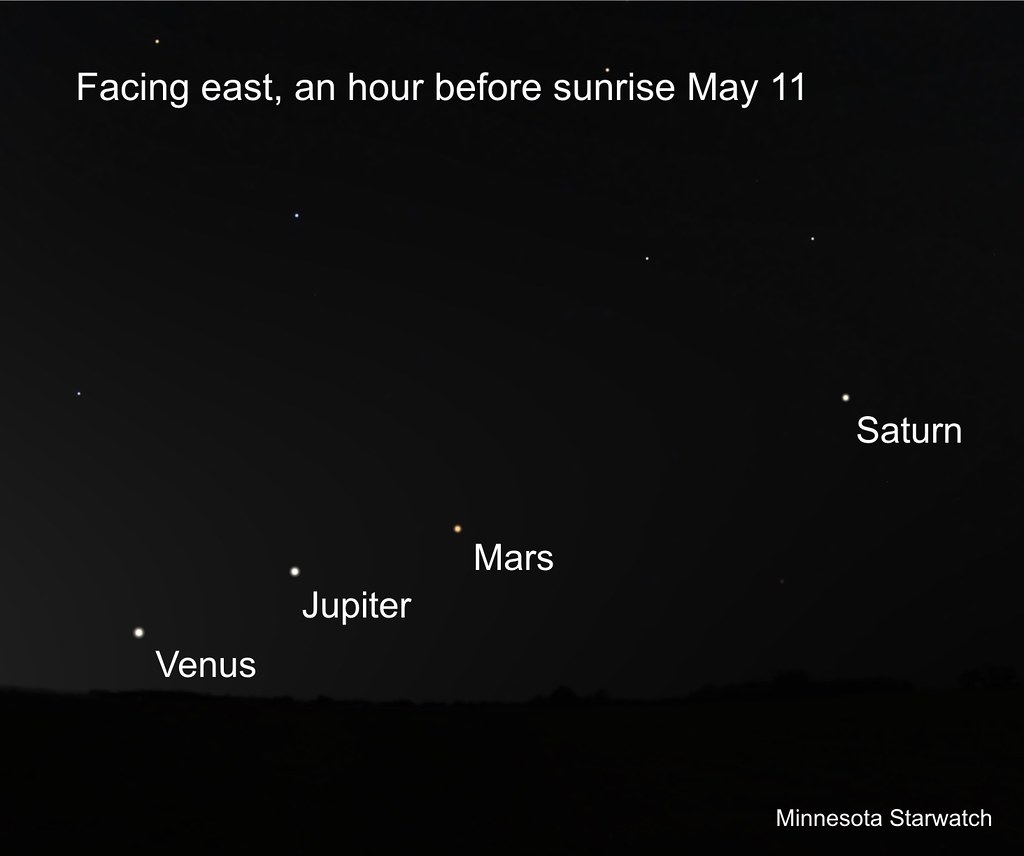
Minnesota Skies: May 2022
Learn more about what to see in May's night sky!
Published04/29/2022 , by Deane Morrison
May opens with the two brightest planets low and close together in the eastern morning sky. Jupiter will be just above brilliant Venus, in the act of passing it en route to a rendezvous with Mars.
The Red Planet will be glimmering to the upper right of the pair. Jupiter rapidly closes in on Mars and catches it on May 29, when it will appear close above Mars.
Jupiter continues along the same path toward Saturn, but the ringed planet moves steadily westward, away from Jupiter, too fast to catch. That’s because Saturn, the most distant from the sun of the three bright outer planets, orbits most slowly. Thus, Earth’s orbital motion pushes it most rapidly westward across the sky. Mars, being the closest and speediest of the three, resists the push and lingers in the eastern sky the longest.
To see the planets, try to get outside just before the sky starts to lighten.

In the evening sky, Leo, the lion, is high in the south at nightfall on May Day. The brilliant star in the southeast is Arcturus, in kite-shaped Böotes, the herdsman. Below and slightly west of Arcturus is Spica, the brightest star in Virgo, the maiden. All these stars move westward as the hour and the calendar move forward.
May’s full moon treats us to a total lunar eclipse the night of May 15–16. The eclipse begins at 9:27 pm on May 15, when the moon first contacts Earth’s umbra—the inner part of its shadow, where the sun is completely blocked. Totality lasts from 10:29 pm to 11:53 pm. The moon is deepest within the umbra at 11:11 pm. After totality ends, the moon will be partially eclipsed again until 12:55 am on May 16. Let’s hope for clear weather that night!
Moon Phases
May 9—First Quarter Moon
The Moon is one-quarter of its way through its orbit around the Earth, which makes half the Moon illuminated and half dark from our perspective. This is the best time of the month to see the Moon’s surface features like craters and mountains through binoculars or a telescope.
May 16—Full Moon
The Moon is located on the opposite side of the Earth as the Sun and the side we see is fully illuminated.
May 22—Third Quarter Moon
This phase occurs when the Moon is three-quarters of the way through its orbit around the Earth.
May 30—New Moon
The Moon is located on the same side of the Earth as the Sun and is not visible in the night sky. This is the best time of the month to observe faint objects like galaxies and star clusters because there is no moonlight to interfere.

